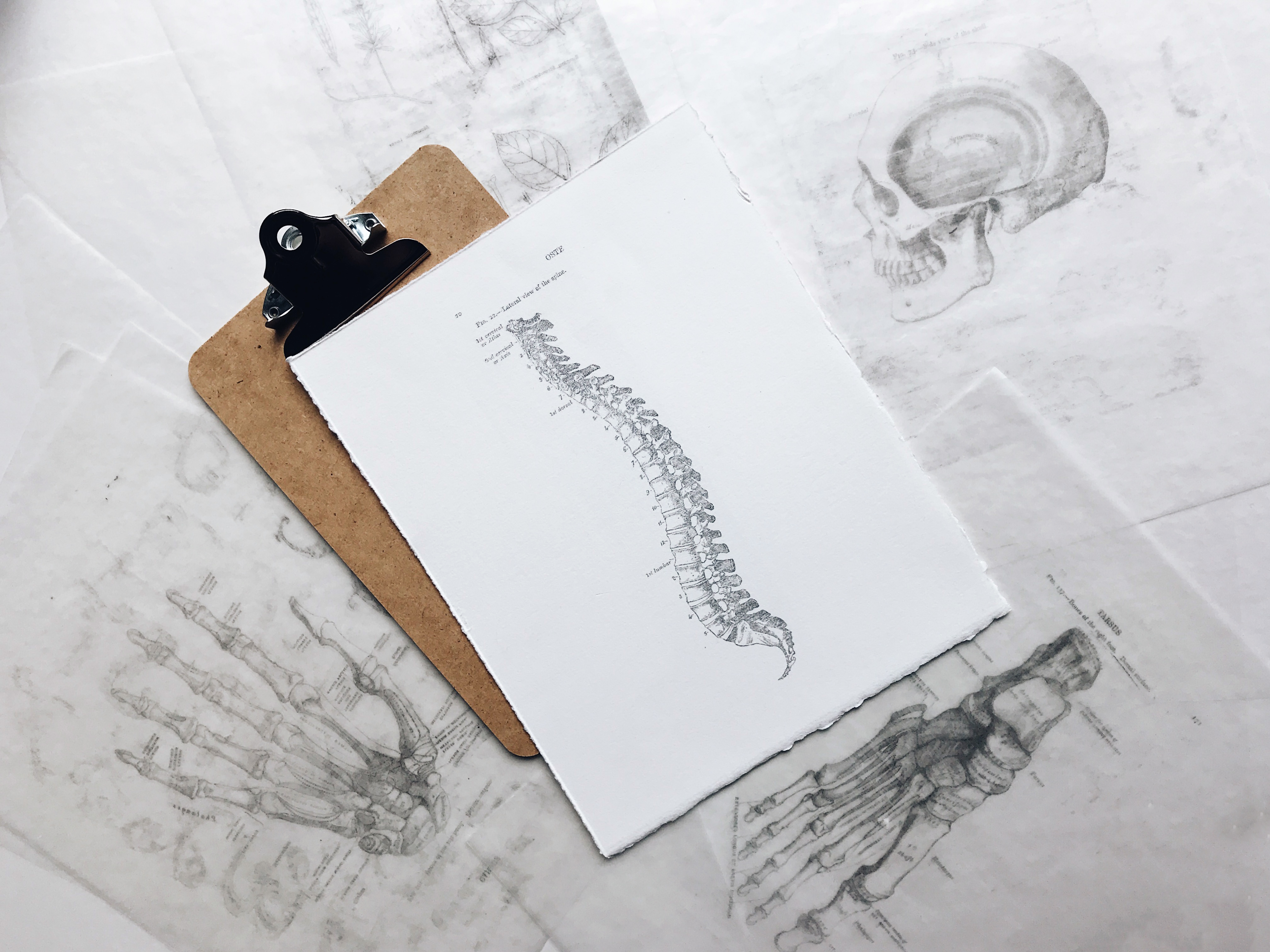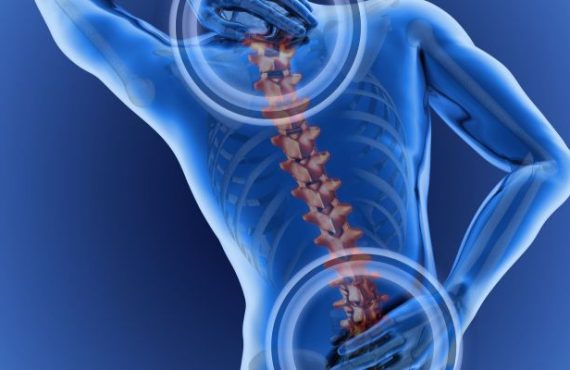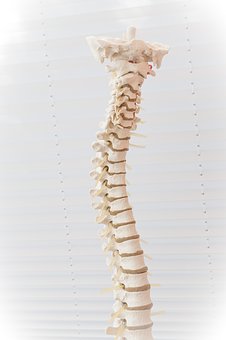In this article, you will learn about chiropractic services in the Pensacola healthcare scene. Chiropractic is a form of alternative medicine that focuses on the diagnosis and treatment of musculoskeletal disorders, particularly those affecting the spine. It is a non-invasive and drug-free approach that aims to improve overall health and well-being. By exploring chiropractic services in Pensacola, you will gain a better understanding of the options available to you for managing pain and achieving optimal health.
Pensacola has a thriving healthcare scene and chiropractic services play a significant role in it. Chiropractors are highly trained professionals who specialize in the manipulation of the spine and other joints to improve the function of the nervous system and promote natural healing in the body. By seeking chiropractic care in Pensacola, you have access to a range of services such as spinal adjustments, massage therapy, and rehabilitative exercises. These services can help alleviate pain, improve mobility, and enhance your overall quality of life. So, let’s dive deeper into the world of chiropractic services in Pensacola and discover how they can benefit you.

This image is property of images.unsplash.com.
Table of Contents
Overview of Chiropractic Services
Definition and Purpose of Chiropractic Services
Chiropractic services are a form of alternative medicine that focuses on the diagnosis, treatment, and prevention of disorders of the musculoskeletal system, particularly the spine. The main purpose of chiropractic care is to restore and optimize the function of the body’s nervous system, which controls every cell, tissue, and organ in the body. Chiropractors use hands-on spinal adjustments and other techniques to align the body’s musculoskeletal structure, allowing the body to heal itself without the need for drugs or surgery.
History of Chiropractic Medicine
Chiropractic medicine has a rich history that dates back to the late 19th century. It was founded by D.D. Palmer in 1895, who believed that misalignments in the spine, known as subluxations, were the root cause of many health issues. Palmer’s theories and practices gained popularity, and chiropractic medicine became recognized as a distinct healthcare profession. Over the years, chiropractic techniques and philosophies have evolved, blending traditional spinal adjustments with modern diagnostic tools and therapies.
Key Principles and Techniques in Chiropractic Care
Chiropractic care is built upon several key principles. One of the main principles is the belief in the body’s innate ability to heal itself. Chiropractors see themselves as facilitators of this healing process by ensuring that the spine and nervous system are functioning optimally. The primary technique used by chiropractors is spinal adjustment or manipulation, where gentle force is applied to specific joints in the spine to correct misalignments. Other techniques used in chiropractic care include physical therapy modalities, soft tissue techniques, and nutritional counseling.
Benefits of Chiropractic Services
Pain Relief and Management
One of the most recognized benefits of chiropractic care is pain relief and management. Many patients seek chiropractic services to alleviate back and neck pain, which are often caused by misalignments in the spine. Chiropractors use spinal adjustments to realign the vertebrae, reducing pressure on nerves and relieving pain. Chiropractic care has also been found to be effective in managing headaches and migraines, allowing patients to experience long-term relief without the need for medication.
Improvement in Joint Mobility and Function
Chiropractic care is not limited to spinal adjustments. Chiropractors also focus on improving joint mobility and function throughout the body. By restoring proper alignment and mobility to joints, chiropractic care can enhance range of motion and flexibility, making it beneficial for athletes and individuals with joint disorders. Patients often find that chiropractic treatments can alleviate discomfort and improve overall mobility, allowing them to engage in activities they enjoy with less pain and stiffness.
Enhanced Overall Health and Well-being
Chiropractic care goes beyond pain relief and addresses the overall health and well-being of individuals. By optimizing the function of the nervous system, chiropractic services promote the body’s ability to heal itself and maintain optimal health. Regular chiropractic care has been linked to improvements in immune function, sleep quality, digestion, and overall energy levels. Chiropractors also provide guidance on healthy lifestyle choices, including exercise, proper nutrition, and stress management, further enhancing overall well-being.
Types of Chiropractic Treatments
Spinal Adjustments and Manipulations
Spinal adjustments and manipulations are the foundation of chiropractic care. These techniques involve applying controlled force to specific joints in the spine to restore proper alignment and mobility. Spinal adjustments can alleviate pain, improve nerve function, and enhance overall body function. Chiropractors use their hands or specialized instruments to perform these adjustments, customizing the treatment to each patient’s unique needs.
Physical Therapy Modalities
In addition to spinal adjustments, chiropractors often incorporate physical therapy modalities into their treatment plans. These modalities may include therapeutic exercises, stretching, ultrasound, electrical stimulation, and heat or cold therapy. Physical therapy modalities help to complement the effects of spinal adjustments by strengthening muscles, improving circulation, reducing inflammation, and promoting tissue healing.
Soft Tissue Techniques
Chiropractors are trained in various soft tissue techniques to address muscular and fascial imbalances. These techniques include massage, trigger point therapy, myofascial release, and instrument-assisted soft tissue mobilization. By releasing tension and reducing adhesions in soft tissues, chiropractic care can alleviate pain, improve flexibility, and enhance overall mobility.
Nutritional Counseling
Chiropractors understand the important role that nutrition plays in overall health and well-being. They often provide nutritional counseling to their patients, offering guidance on healthy eating habits and the role of proper nutrition in supporting the body’s natural healing processes. Nutritional counseling may involve recommendations for supplements, dietary modifications, and lifestyle changes to optimize health.
Conditions Treated by Chiropractors
Back and Neck Pain
Back and neck pain are among the most common reasons why individuals seek chiropractic care. Whether caused by poor posture, muscle strain, or spinal misalignments, chiropractors can provide effective relief for these conditions. By addressing the underlying cause of the pain, chiropractic care aims to eliminate discomfort and improve overall spinal health.
Headaches and Migraines
Chiropractic care has shown promising results in the treatment and management of headaches and migraines. Many headaches are caused by tension in the neck and upper back, which can be alleviated through chiropractic adjustments. By addressing spinal misalignments and reducing nerve interference, chiropractors can provide long-term relief from chronic headaches and migraines.
Joint Disorders
Chiropractic care is beneficial for individuals with joint disorders such as osteoarthritis, rheumatoid arthritis, and joint inflammation. Chiropractors can help improve joint mobility and reduce pain and stiffness associated with these conditions, allowing patients to maintain an active lifestyle.
Sports Injuries
Athletes often turn to chiropractic care to treat and prevent sports injuries. Chiropractors can help athletes recover from injuries and optimize their performance by addressing musculoskeletal imbalances, improving joint mobility, and enhancing overall body function. Chiropractic care focuses on both acute injury management and long-term injury prevention.
Pregnancy-related Discomfort
Pregnancy can bring about various discomforts such as back pain, pelvic pain, and sciatica. Chiropractic care is safe and effective for pregnant women, providing relief from these discomforts without the use of medication. Chiropractors use gentle techniques to alleviate tension in the spine and pelvis, supporting the body’s natural changes during pregnancy.

This image is property of images.unsplash.com.
Choosing a Chiropractor in Pensacola
Qualifications and Credentials
When choosing a chiropractor in Pensacola, it is essential to consider their qualifications and credentials. Look for chiropractors who have completed a Doctor of Chiropractic (D.C.) degree from an accredited institution. Additionally, check if they are licensed by the state and if they hold any specialized certifications or memberships in professional chiropractic organizations.
Experience and Specializations
Consider the chiropractor’s experience and specializations when making your selection. Some chiropractors have expertise in specific areas such as sports chiropractic, pediatric chiropractic, or prenatal chiropractic care. If you have a particular condition or concern, finding a chiropractor with experience in that area can ensure that you receive the most appropriate care for your needs.
Patient Reviews and Testimonials
Reading patient reviews and testimonials can provide valuable insights into the quality of care provided by a chiropractor. Look for reviews on trusted platforms and websites, and pay attention to patients’ experiences with the chiropractor’s communication skills, treatment effectiveness, and overall satisfaction. Positive reviews can help you make an informed decision and feel confident about your choice.
Understanding Chiropractic Care Process
Initial Consultation and Evaluation
The chiropractic care process typically begins with an initial consultation and evaluation. During this visit, the chiropractor will review your medical history, discuss your symptoms and concerns, and perform a comprehensive physical examination. This evaluation helps the chiropractor understand your condition and develop a personalized treatment plan.
Development of Personalized Treatment Plans
Based on the evaluation, the chiropractor will develop a personalized treatment plan tailored to your specific needs. This treatment plan may include a combination of spinal adjustments, physical therapy modalities, soft tissue techniques, and nutritional counseling. The chiropractor will explain the proposed treatment plan, answer any questions you may have, and seek your input to ensure that you are comfortable with the plan.
Frequency and Duration of Chiropractic Sessions
The frequency and duration of chiropractic sessions will depend on your condition and the treatment plan created by your chiropractor. Initially, you may require more frequent visits to address any acute issues and establish a foundation for healing. As your condition improves, the visits may become less frequent. It is important to follow the recommended treatment schedule to maximize the benefits of chiropractic care.

This image is property of images.unsplash.com.
Integration of Chiropractic Care with Other Healthcare Services
Collaboration with Medical Doctors and Specialists
Chiropractic care often works synergistically with other healthcare services. Chiropractors may collaborate with medical doctors and specialists to ensure comprehensive and well-rounded care for their patients. This collaboration may involve sharing information, referring patients to other healthcare providers for specialized treatments, and co-managing patients’ care to achieve the best possible outcomes.
Complementary Therapies
Chiropractic care can be complemented by other therapies such as massage therapy, acupuncture, and physical therapy. These complementary therapies can enhance the effects of chiropractic adjustments, promote relaxation, and address specific areas of concern. Chiropractors may work alongside other healthcare professionals to provide a holistic approach to patient care.
Referrals to Other Healthcare Providers
In some cases, chiropractors may refer patients to other healthcare providers to ensure comprehensive treatment. For example, if a patient presents with a condition that may require surgical intervention or further medical evaluation, the chiropractor may refer them to an appropriate specialist. By coordinating care and involving other healthcare providers as needed, chiropractors can ensure the best possible outcomes for their patients.
Costs and Insurance Coverage for Chiropractic Services
Out-of-Pocket Expenses
Chiropractic services are typically paid for out-of-pocket, and the cost can vary depending on the chiropractor’s location, experience, and the complexity of the treatment provided. It is important to inquire about the fees and payment options during your initial consultation to ensure that you are aware of the financial commitment involved.
Health Insurance Policies
Many health insurance policies provide coverage for chiropractic services, although some plans may have limitations or require specific referrals. Contact your insurance provider to understand the extent of coverage and any requirements that need to be fulfilled, such as pre-authorization or a referral from your primary care physician.
Medicare and Medicaid Coverage
Medicare and Medicaid typically cover chiropractic services for specific conditions and within certain limitations. It is essential to familiarize yourself with the guidelines and requirements set forth by these programs to ensure eligibility and coverage for chiropractic care.
Flexible Spending Accounts (FSAs) and Health Savings Accounts (HSAs)
If you have a flexible spending account (FSA) or health savings account (HSA), you may be able to use these funds to cover chiropractic services. These accounts allow you to set aside pre-tax dollars for qualified medical expenses, including chiropractic care. Check with your FSA or HSA provider for more information on eligible expenses and reimbursement processes.
Tips for Maximizing the Benefits of Chiropractic Care
Following the Treatment Plan
To maximize the benefits of chiropractic care, it is important to follow the treatment plan outlined by your chiropractor. This may include attending all scheduled appointments, following any specific exercise or stretching routines, and following any dietary or lifestyle recommendations. Consistency and adherence to the treatment plan are crucial for optimal outcomes.
Maintaining Good Posture and Ergonomics
Maintaining good posture and ergonomics throughout your daily activities can help support the effects of chiropractic care. Sit and stand with your spine properly aligned, avoid slouching or hunching over, and use ergonomic equipment and furniture whenever possible. Good posture helps to minimize stress on the spine and promotes long-term spinal health.
Incorporating Exercise and Stretching
Exercise and stretching can complement the effects of chiropractic care by improving strength, flexibility, and overall body function. Your chiropractor may recommend specific exercises or stretches to target your condition or concerns. Incorporating these exercises and stretches into your routine can help maintain the improvements achieved through chiropractic care.
Adopting Healthy Lifestyle Choices
Chiropractic care is just one component of a healthy lifestyle. Adopting healthy lifestyle choices such as eating a balanced diet, getting regular exercise, managing stress, and getting adequate sleep can support the effects of chiropractic care and promote overall health and well-being. Your chiropractor can provide guidance on healthy lifestyle choices tailored to your specific needs.
Conclusion
Chiropractic healthcare services play an essential role in the Pensacola healthcare scene, providing a natural and holistic approach to addressing musculoskeletal issues and promoting overall health. Through spinal adjustments, physical therapy modalities, soft tissue techniques, and nutritional counseling, chiropractors help individuals find relief from pain, improve joint mobility, and enhance their overall well-being. By working in collaboration with other healthcare providers and incorporating complementary therapies, chiropractors ensure comprehensive care for their patients. Whether seeking relief from back pain, headaches, sports injuries, or pregnancy-related discomfort, chiropractic services offer an effective and safe alternative to traditional medical interventions. Embracing chiropractic care as part of your healthcare journey can lead to improved overall health and a higher quality of life.






























